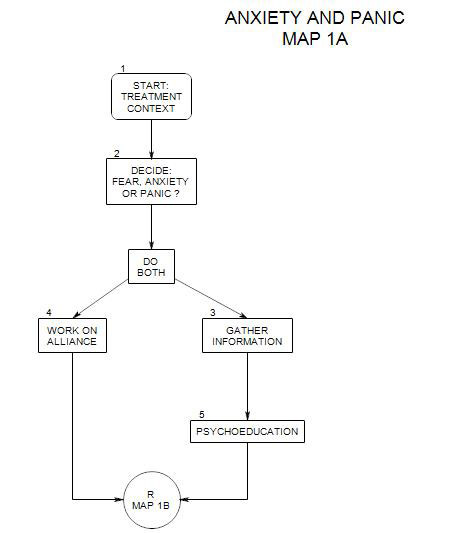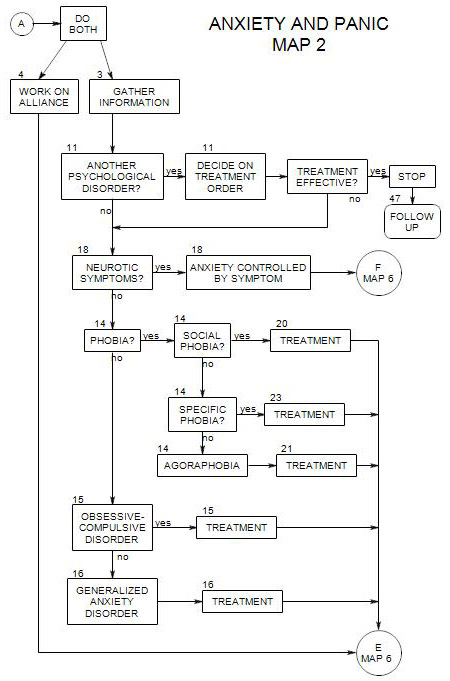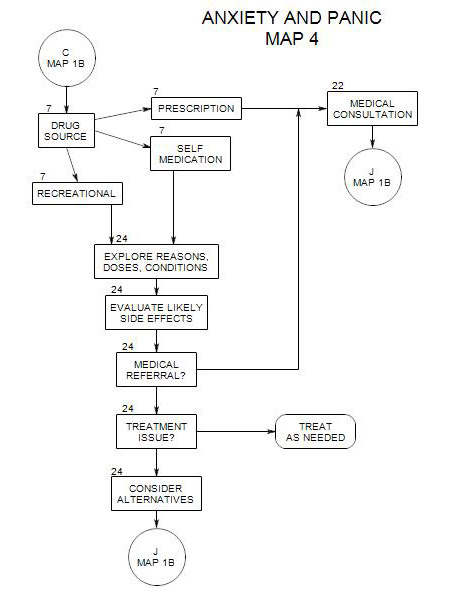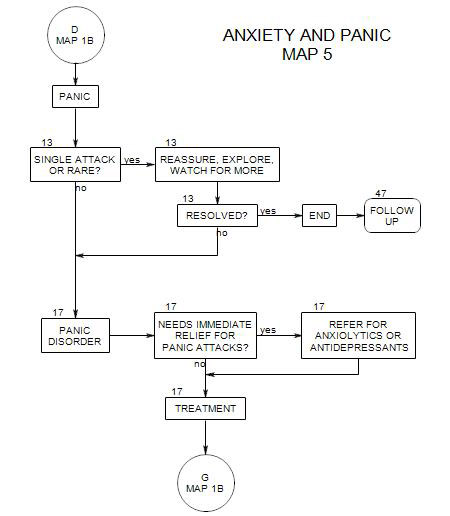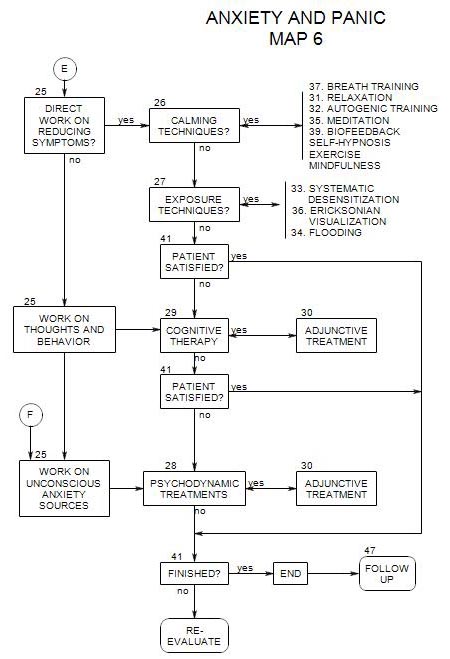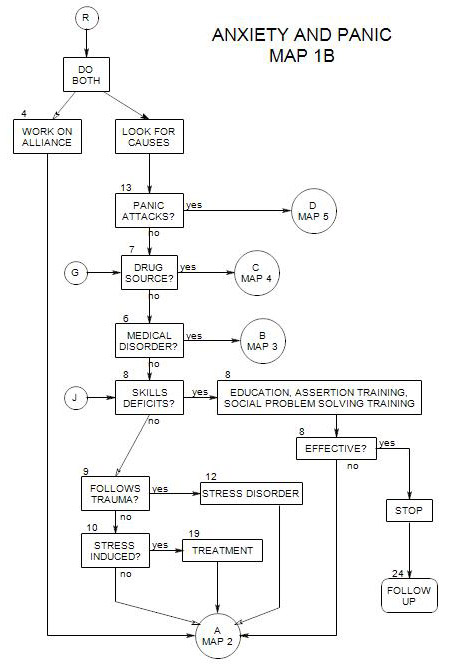
SECTIONS: 4 | 6 | 7 | 8 | 9 | 10 | 12 | 13 | 19 | 24
- Follows Section 18 on Map 2
A phobia is a persistent, irrational fear of a clearly definable object or situation, which interferes with normal behavior (Goldberg, 1998, p. 147) There is typically no evidence that the person is fearful unless he/she is presented with the object or situation feared.
Although there may be some inborn fears, most phobias are learned.
Usually a person doesn’t mention having phobias unless they prevent him/her from functioning in some important area. Rather, he/she finds ways of coping with them. You can uncover a phobia by inferring it from things the person avoids, won’t do, or won’t talk about.
Even when he/she is aware of having a phobia, a person may understate the extent of the phobia – either because he/she is ashamed of it or has learned ways to live without having to deal with it very often.
There are three major classes of phobias
- simple or specific phobia
- social phobia
- agoraphobia
LIST OF FEARS
A person with one phobia is more likely than other people to have another, possibly several phobias. Therefore, whatever the person’s specific diagnosis, it is a good idea to get a list of the situations, objects, events, etc., that he/she fears.
A person can be afraid of almost anything, and whatever it may be, the phobia is likely already to have been given a name. Lists of phobias include
50.Acrophobia heights
50.Claustrophobia confined spaces
50.Arachnophobia spiders, and so on and on.
For a truly extensive list of fears, see “List of phobias” in www.Wikipedia.org.
The person’s list could include one thing or many; it’s a good idea to try to write it down. If you move on to cognitive or behavioral treatment, you can establish a hierarchy starting with the list. If you use a psychodynamic approach, the list will give you an idea of the issues to be explored. [Gruber and Heimberg, 251]
Examination of the list can also help you group the items as a way either to explore their history or meaning or to select starting points for anxiety reduction. If the latter, you can also obtain ratings of the subjective index of discomfort for each of the items. (Gruber and Heimberg, 1997, p. 251)
14a. Specific Phobias
This consists of a fear reaction to a specific object or group of objects [eg: dogs, heights, water, needles, elevators, confined spaces]. The DSM-IV diagnosis is 300.29, if you need to report it to an insurance company.
In practice, although the variety of possibilities is large, most people who seek help are afraid of one or more of the following (Barlow, 1988, p. 475]
- Claustrophobia [fear of confined spaces]
- Fear of blood
- Fear of injury
- Injection phobia
- Dental phobia
- Small animal phobia
A specific phobia may be developmentally appropriate for children and adolescents and subside with maturation.
Phobias are learned, and uncovering the circumstances under which a person developed a phobia can be of some value. However, treatment typically consists of some form of controlled exposure to the feared object or circumstance [Section 23 ].
14b. Social Phobia
Social phobia consists of severe and disabling anxiety in the context of other people. It could be specific, as in a fear of public speaking, or general as self-consciousness or embarrassment around others (Preston, O’Neal and Talaga, 2002, p. 99). Commonly feared situations include parties, public speaking, meetings, and social dating (Gruber and Heimberg, 1997, p. 246].
The DSM-IV diagnosis is 300.23. More pervasive forms of social phobia may be diagnosed as avoidant personality, hysterical-dysphoric personality, or borderline personality (Preston, O’Neal and Talaga, 2002, p. 105).
For treatment, go to Section 20.
14c. Agoraphobia is an irrational fear of a place or class of places [eg: supermarkets, open spaces]. The DSM-IV diagnostic labesl are 300.21 and 300.22.
Agoraphobia is generally a learned response to a situation that the person perceives to be dangerous. The anxiety occurs either in the feared place or when approaching it. Fears tend to generalize, and shat starts out as a specific fear [for example, driving in a car] may broaden [to a fear of leaving home] over time.
The perception of danger can originate in a variety of experiences, such as-
- occurrence of panic attacks in certain circumstances, and generalization to fear of the place in which they occurred [e.g.: standing on line in the supermarket; driving the car, etc.].
- sense of failure when being out in the world, interpreted as danger of going out.
- dependency on others in the home, so that going out puts one at risk.
- fear that leaving home will lead to disasters at home.
For treatment of agoraphobia, see Section 21.
References
Barlow, 1988, Ch. 12, pp. 475-498
Goldberg, 1998, ch. 8, pp.135-153
Gruber and Heimberg, 1997
